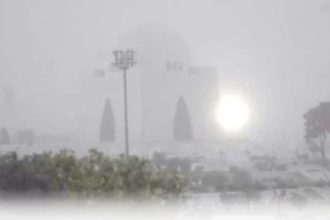Two highly classified US intelligence documents have been leaked, reportedly revealing Israel’s military plans for a potential strike on Iran.
According to the New York Times, these documents originate from the National Geospatial-Intelligence Agency, analyze data from American spy satellites and provide a detailed look at Israeli military exercises and readiness.
Dated October 15 and 16, users with pro-Iran sentiments shared the documents on Telegram. They detail Israeli military manoeuvres, indicating preparations for a possible retaliatory strike against Iran. This follows an Iranian missile attack on October 1, which was a response to a previous Israeli offensive.
One document, titled “Israel: Air Force Continues Preparations for Strike on Iran,” discusses Israeli air force exercises geared toward a potential operation against Iran. These include air-to-air refuelling, search-and-rescue missions, and the strategic relocation of missile systems in anticipation of Iranian counterstrikes. The second document highlights the movement of munitions and other military assets to key locations.
Although the leaked documents describe Israeli military activities, they do not include the satellite images. US intelligence suggests these manoeuvres are part of Israel’s strike preparations, but the extent of Israel’s plans remains uncertain.
The leak has caused significant concern within the US government, with officials split on its impact. Some minimize the leak’s severity, noting it doesn’t expose new US capabilities. Others express serious concerns about the disclosure of Israel’s military strategies amid escalating Middle East tensions.
President Joe Biden, during a recent visit to Germany, acknowledged awareness of Israel’s plans and targets when queried but provided no further details.
The source of the leak is still undetermined, though initial suspicions point to a lower-level US government employee. The Pentagon, US intelligence agencies, and the FBI are conducting an ongoing joint investigation to ascertain the breach’s full extent and prevent further leaks.






